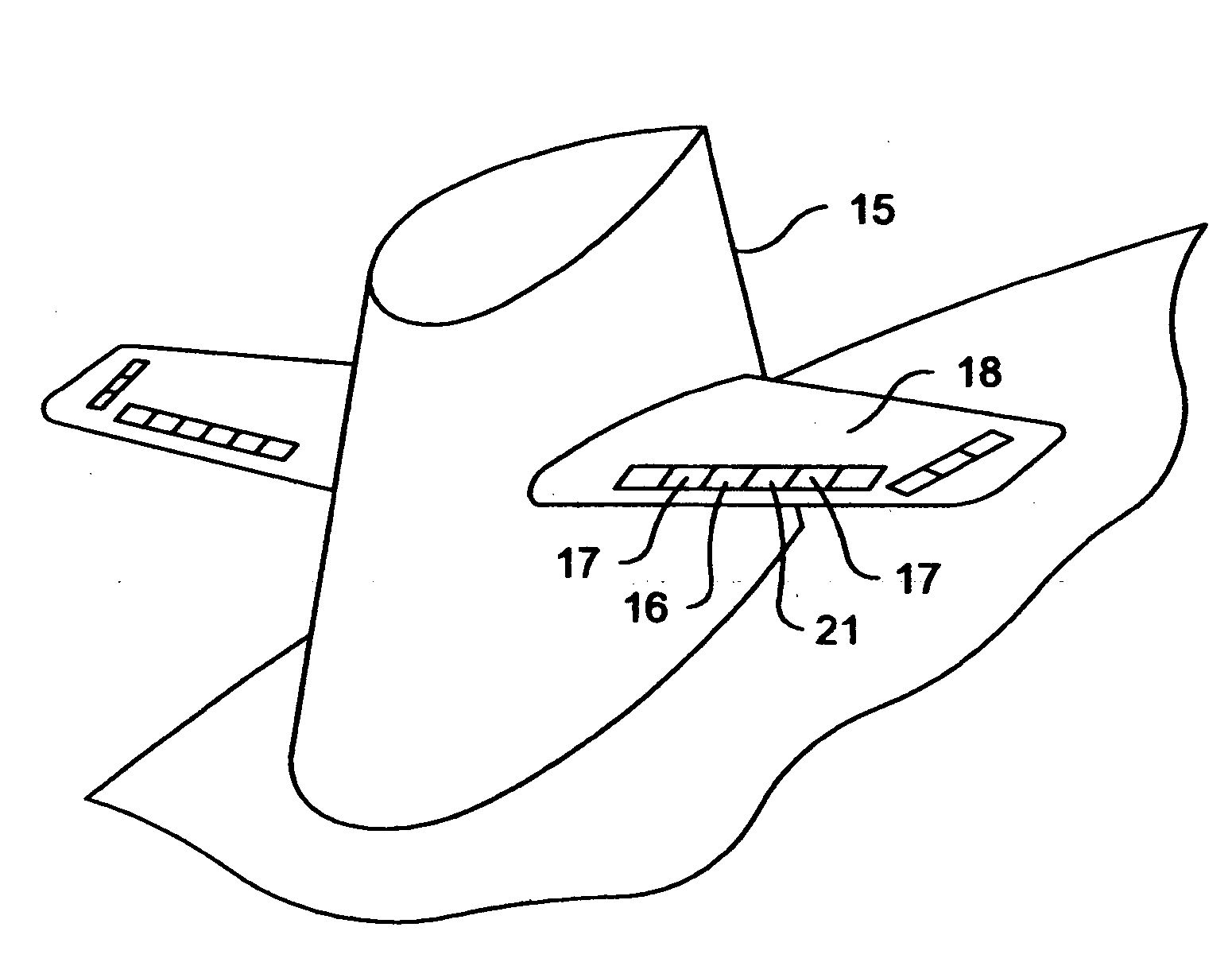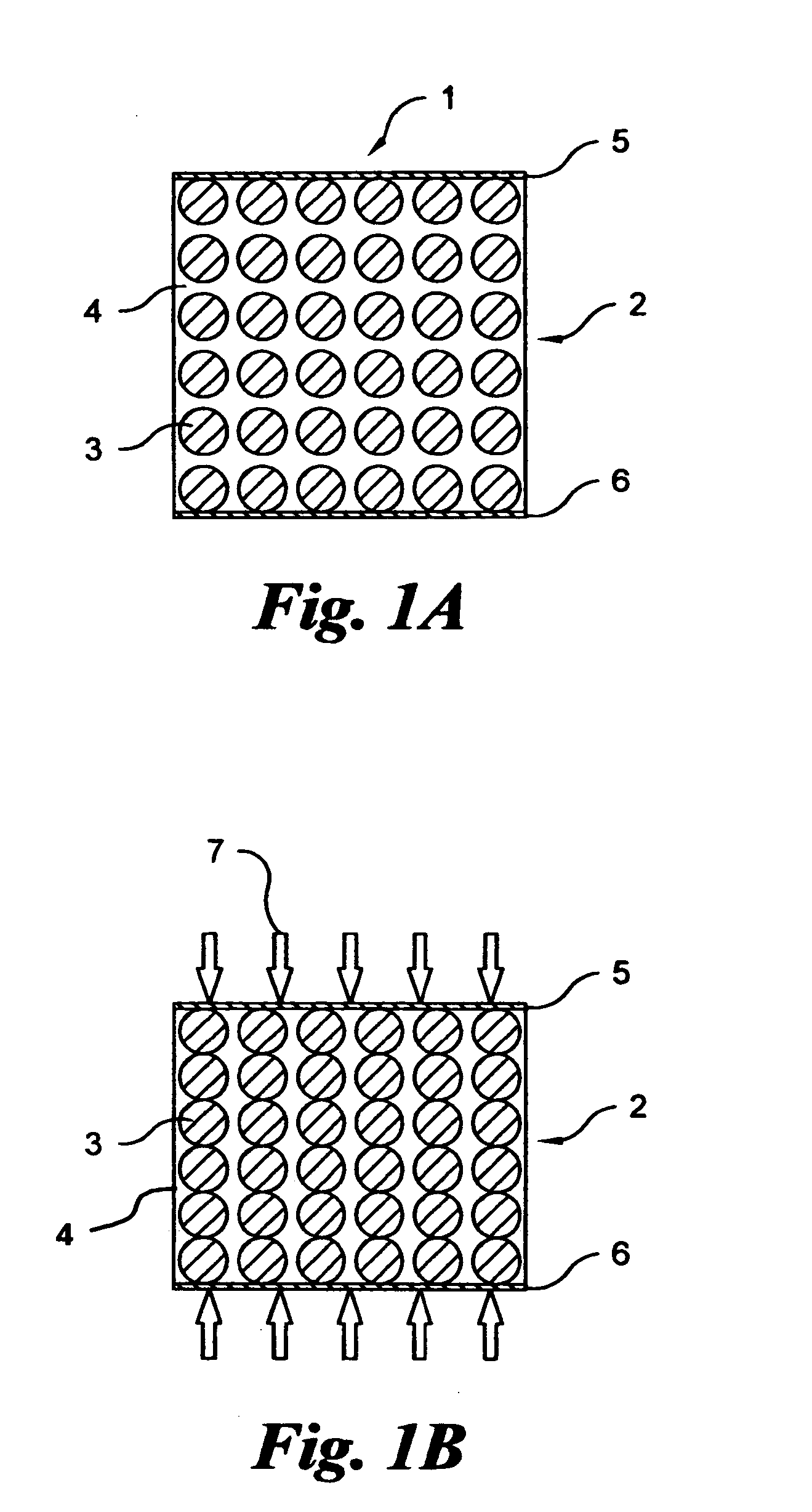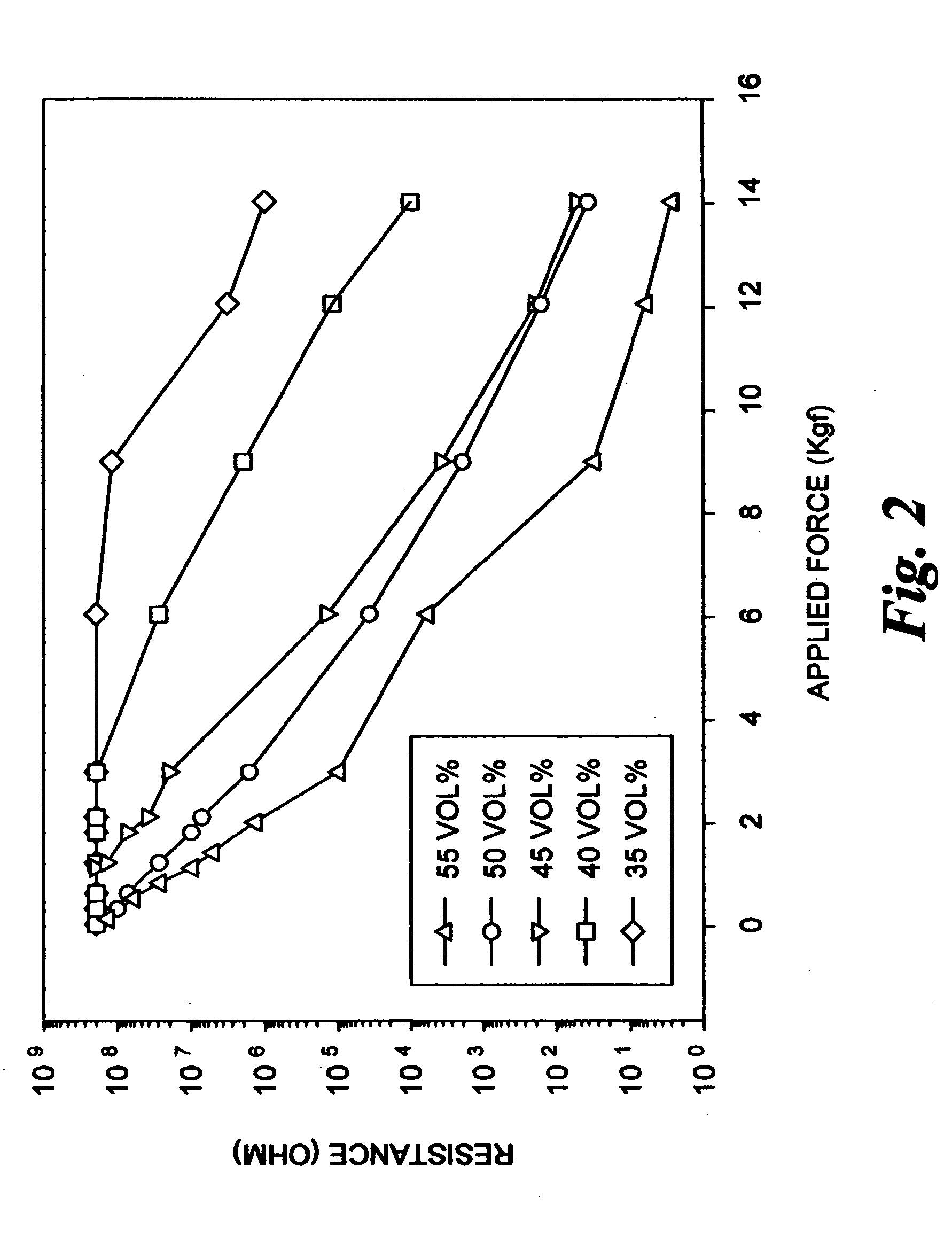Pressure sensitive sensor for real-time reconfigurable sonar applications
- Summary
- Abstract
- Description
- Claims
- Application Information
AI Technical Summary
Benefits of technology
Problems solved by technology
Method used
Image
Examples
Embodiment Construction
[0073] Referring now to FIG. 1a, a schematic representation of the sensor 1 is shown comprising a pressure conduction composite 2 disposed between two conductive elements 5, 6. Components are not to scale. Conductive elements 5, 6 include a variety of materials, such as metals and composites. Pressure conduction composite 2 is composed of conductive particles 3 within a non-conductive yet compressible and resilient matrix 4. The matrix 4 is a solid that surrounds and isolates the conductive particles 3 so as to maximize resistance and minimize conductance thereby preventing current flow between conductive elements 5, 6 at ambient pressure.
[0074] Referring now to FIG. 1b, distance between conductive particles 3 decreases with increasing force 7 thereby reducing resistance and increasing conductance. In the present invention, force 7 is produced by an acoustic wave interacting with one of the conductive elements 5 or 6 comprising the sensor 1. Maximum conductance is achieved when con...
PUM
 Login to View More
Login to View More Abstract
Description
Claims
Application Information
 Login to View More
Login to View More - R&D
- Intellectual Property
- Life Sciences
- Materials
- Tech Scout
- Unparalleled Data Quality
- Higher Quality Content
- 60% Fewer Hallucinations
Browse by: Latest US Patents, China's latest patents, Technical Efficacy Thesaurus, Application Domain, Technology Topic, Popular Technical Reports.
© 2025 PatSnap. All rights reserved.Legal|Privacy policy|Modern Slavery Act Transparency Statement|Sitemap|About US| Contact US: help@patsnap.com



